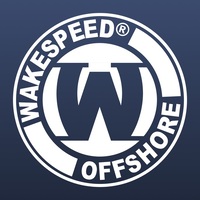Which Cable Type? Automotive, Marine, Solar & Welding/Battery
Automotive DC Cables
- Voltage Range: Automotive DC cables are designed to handle voltages typically found in automotive electrical systems, usually within the range of 12 V – 48 V.
- Construction: These cables often feature flexible insulation materials to withstand the vibrations and movements encountered in vehicles.
- Application: Primarily used in cars, trucks, caravans, RVs and other land vehicles for wiring internal electronics, lighting, and other electrical components.
- Robust Sheathing on Twin Cables: Designed with durable sheathing to protect against harsh conditions such as dirt, heat and road grime.
Before running any wires, double-check that you have selected the right cable type for each circuit; our appropriate type of cable calculator can help you match size and duty cycle in one step. If you need further guidance, see the right cable type notes in our solar-panel wiring guide, or our handy right cable type conversion tables. For premium Australian-made options, explore Tycab’s selection of automotive wires, marine cables.
Marine DC Cables
- Corrosion Resistance: A key characteristic of marine DC cables is their resistance to corrosion, crucial in salt-water environments.
- Tinned Copper Conductors: Often made with tinned copper to prevent corrosion, which is vital for the longevity and safety of electrical systems on boats in wiring that may be exposed to saltwater or saltwater mist.
- Robust Sheathing on Twin Cables: Designed with durable sheathing to protect against harsh marine conditions like moisture, salt and UV exposure.
A quality marine loom isn’t just about gauge size – always pick an appropriate cable type for every environment. For an Australian-made solution that covers automotive, marine, and battery applications, see our Austech cable line-up. Our post on continuous ratings explains why the correct cable type is every bit as important as current-carrying capacity.
Solar DC Cables
- High Voltage Tolerance: Solar DC cables are engineered to handle the higher voltages typically generated by solar panels, often up to 1000 V or more.
- Limited Size Availability: Commonly available in limited sizes, with 4 mm² and 6 mm² being the most prevalent, catering to the standard requirements of solar panel connections.
- Firm Insulation: Features firmer insulation to safely contain the high DC voltages and to withstand environmental stressors in outdoor settings.
- Robust Sheathing: Designed with durable sheathing to protect against harsh weather, UV and abrasion.
Our 6 mm² twin PV1-F is a popular choice (cable type), as is the lighter 4 mm² variant (cable type). Don’t forget the other different cable types and accessories – glands, conduit and fuses – that finish a professional installation, and make sure your inverter link uses the correct cable type and fuse combo.
Welding/Battery Cables
- High Current Capacity: Welding and battery cables are designed to handle high current, making them suitable for heavy-duty applications like large inverters, main battery-to-battery connections, and battery-to-busbar setups.
- Flexible and Durable: These cables are typically more flexible than standard cables, which allows for easier installation in tight spaces and reduces the risk of breakage under stress.
- Construction: Often made with finely stranded copper to enhance conductivity and flexibility. The insulation is robust to resist high temperatures, abrasion and various chemicals.
For monster-current paths consider our 70 mm² flexible welding lead – just make sure it’s the appropriate cable type for your install. Terminating battery cable and welding cable? Grab matching bellmouth lugs (battery and welding cable lugs).
When to Use Each Type of Cable
- Welding/Battery Cables: Ideal for applications that require high current transfer, such as connecting inverters and main power setups in larger systems. Their durability and flexibility make them well-suited for environments where cables may be subject to physical stress. (choosing the right cable type)
- Automotive Cables: Perfect for vehicle-based systems where flexibility and lower voltage handling are key – our 8 B&S roll is a versatile cable type.
- Marine Cables: The go-to choice for marine applications, where corrosion-resistance and environmental durability are paramount. New to 12 V boating? Our FAQ covers the different cable types in plain English.
- Solar Cables: Specifically designed for solar-power setups, capable of handling high DC voltages and outdoor conditions. For a refresher on why PV1-F beats generic flex, revisit the correct cable type and continuous-rating discussion.
By understanding the unique attributes and applications of automotive, marine, solar and welding/battery cables, you can always pick the right cable type for the job – ensuring optimum performance and safety in any environment.





























